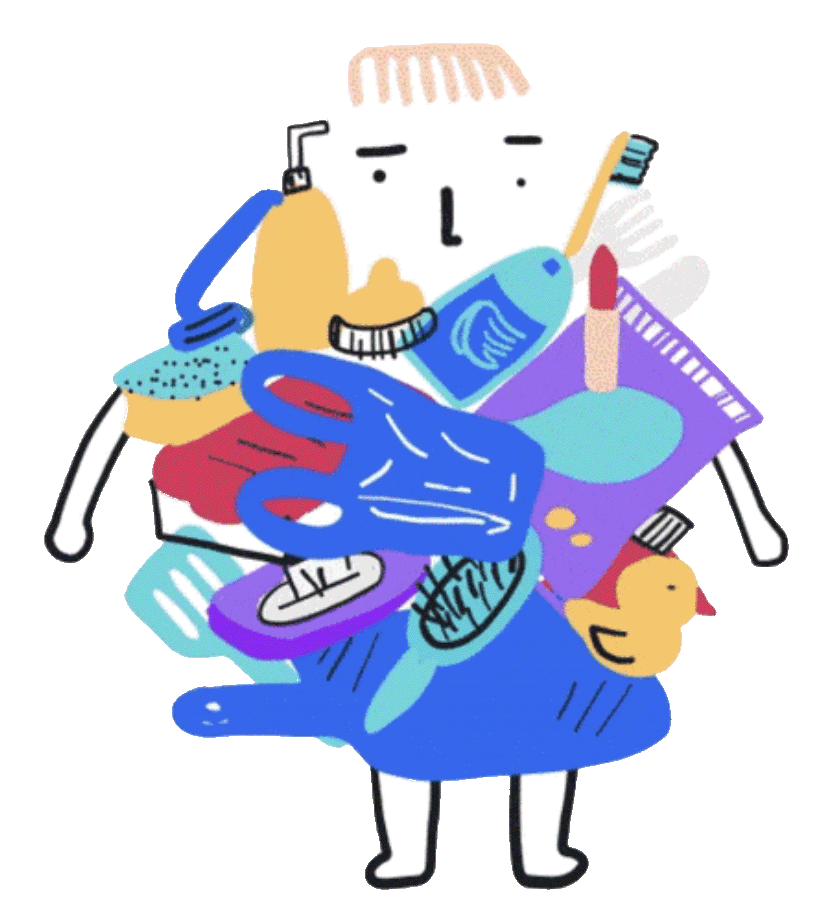Almost all plastic products bear the general recycling symbol: a triangle formed by three circling arrows. The number in the triangle indicates the type of plastic. There are six common types of plastic and one miscellaneous category with the number 7.
Notes on plastic recycling codes:
- The plastic recycling number system actually serves no purpose: the consumer cannot do much with it and the waste separators do not use it.
- The figure suggests that plastic is recycled per product group. This has not been the case (for a long time now) in practice.
- While the figure gives an indication of the type of plastic, it says nothing about hardness, shape or consistency. The same type of plastic can be used for plastic bags or bottles, for example, and there are different grades for each type.
- Not all types of plastic can be recycled equally well and only a very low percentage of plastic is recycled at all. Out of all the plastic produced worldwide since the 1950s, only 9% has been recycled.
- The regulations for displaying the plastic recycling symbols are inadequate. Often, the code stamps are very small, difficult to find, and difficult to read (especially when the plastic is transparent).
- Code 7 is a residual category that nobody can use. This plastic is simply burned.
Though it serves no real purpose in terms of waste separation, the recycling code can be used by consumers to make a distinction between plastics that would be safer to use than other plastics.
 PET 1
PET 1i.e. PET bottles for soft drinks. It is relatively safe.
 HDPE 2
HDPE 2i.e. plastic containers and pipes.
 PVC 3
PVC 3i.e. sewage pipes and synthetic window frames.
 LDPE 4
LDPE 4i.e. soft plastics such as cling film, plastic drycleaner covers, carry bags.
 PP 5
PP 5i.e. plastic furniture, jerry cans, car parts, bottle tops.
 PS 6
PS 6i.e. disposable cups, meat trays, packaging for electronics.
 Overige en gemengde kunststoffen 7
Overige en gemengde kunststoffen 7Code 7 is a miscellaneous category.
Look for the Zero
In 2015 we, as Plastic Soup Foundation, added the Zero Plastic Inside logo for cosmetics that are from harmful microplastic ingredients.
In 2015 we, as Plastic Soup Foundation, added the Zero Plastic Inside logo for cosmetics that are from harmful microplastic ingredients.
Call to the World
Unfortunately, plastics that are difficult to recycle are hardly ever banned. In 2013, scientists of the journal ‘Nature’ called on the world to classify the most problematic plastics as dangerous and undesirable in their article Classify plastic waste as hazardous.The article focuses on plastics with potentially toxic chemicals and plastics that cannot be reused or recycled. These should be replaced immediately with safer and reusable alternatives. PVC (code 3), polystyrene (code 6), polyurethane and polycarbonate (both falling under code 7) are mentioned as the most problematic.
In the United States, a number of states have moved to the prohibition of polystyrene (commonly known as styrofoam). This insulating plastic is mainly used in fast food. The Swiss food company Nestlé recognized in 2019 that certain types of plastic, including expanded polystyrene, simply cannot be recycled. The company has drawn up The Negative List. The plastics on this list will be replaced and no longer used in new packaging.


.png)

